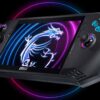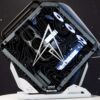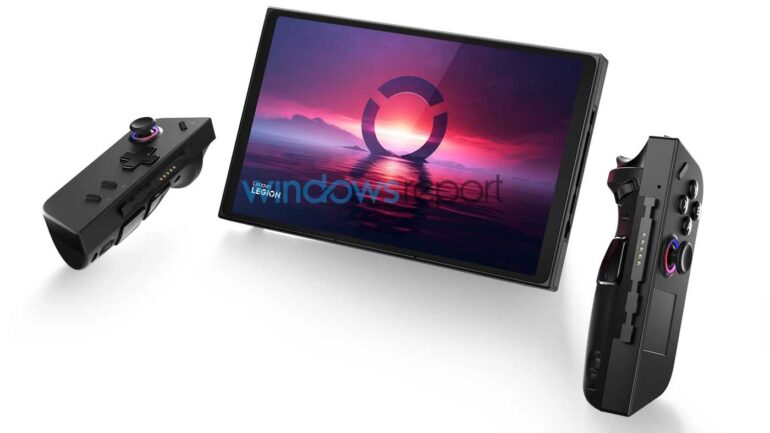Update #2: Windows Report has now blown the lid clean off of these ongoing Lenovo Legion Go rumours, sharing the full specs and price of the company’s entry into the ballooning handheld gaming PC market after obtaining official presentational documents ahead of a full reveal on September 1st.
Other than the notable fact that the Legion Go’s controllers can be attached or removed and used separately like Switch Joy-Cons, it’s also looking to be a bit of a powerful beast, and sports a huge display. At 8.8″ with a 2560 x 1600 resolution and 144Hz refresh it’s sure to be impressive to behold, and it has the specs to back it up with up to an AMD Ryzen Z1 Extreme processor and 16GB of incredibly fast 500Mhz LPDDR5X RAM. It’ll also feature up to a huge 1TB of storage, a fast charging, 49.2WH battery.
The Legion Go will reportedly cost $799 USD (around $1250 AUD straight converted) making it more expensive than the $599 USD ROG Ally, and release sometime in October.
| Lenovo Legion Go | |
| Dimensions (L x W x H) | Base Module: (mm): 210mm x 131mm x 20mm (inches): 8.27? x 5.15? x 0.79” Base Module w/ Controllers Attached: (mm): 299mm x 131mm x 41mm (inches): 11.8” x 5.15” x 1.61” |
| Weight | Controllers Detached: 640g (1.41lbs) Controllers Attached: 854g (1.88lbs) |
| Color | Shadow Black |
| Display | 8.8” QHD+ (2560 x 1600) IPS; 16:10 10-point Touch (144Hz / 97% DCI-P3 / 500nits / 83%AAR |
| Touchpad | Multi-finger |
| Processor | Up to AMD Ryzen Z1 Extreme with AMD RDNA Graphics |
| Memory | 16GB 7500Mhz LPDDR5X on board |
| Storage | 256GB / 512GB / 1TB PCIe 4.0 NVMe M.2 2242 |
| Operating System | Windows 11 Home |
| Battery | 2-cell 49.2WHr Super Rapid Charge2 Controller battery capacity: 900mah2 |
| Power Adapter | USB Type-C, 65W AC adapter Output: 20V DC, 3.25A, 65W Input: 100~240V AC 50/60 universal |
| Ports | Top 3.5mm audio combo jack1 x USB Type-C (USB 4.0, DisplayPort™ 1.4, Power Delivery 3.0)1 x microSD card reader Bottom 1x USB Type-C (USB 4.0, DisplayPort 1.4, Power Delivery 3.0) |
| Control and Input | Gamepad Controls Legion L/RABXY buttonsD-padL & R hall effect joysticksL & R bumpersL & R analog triggersLegion L & R buttonsView button (L)Menu button (L)Trackpad (R)6 x assignable grip buttons1 x mouse wheel (R)1x mouse sensor (R)2 x controllers release buttons Haptics: HD haptics Gyro: 6-Axis IMU |
| Audio | 2 x 2W SpeakersDual-array near-field microphone |
| Connectivity | 2 x 2 Wi-Fi 6E (802.11 ax)3Starting from Bluetooth® 5.2 |
| Software | Legion Space Xbox Game Pass Ultimate – Complimentary 3-month membership4,5 |
Update: Windows Report has shared what it claims are images of Lenovo’s apparent entry into the rapidly-growing PC gaming handheld market and, well, it’s definitely got some similarities to another iconic handheld…
The device, which is still reportedly dubbed the Lenovo Legion Go, doesn’t look all too dissimilar from competing devices like the Steam Deck, Ayaneo range or the ASUS Rog Ally, with the one distinction that it features very Nintendo Switch Joy Con-like removable controllers on either side.
It’ll apparently be running Windows 11 on its 8-inch screen, powered by AMD’s new Phoenix chips, but none of that seems as exciting as the potential of those split controllers – it also has a very Switch OLED-style stand built into the back. Of course it’ll be going above and beyond the Switch’s capabilities with AAA PC gaming, and even has a Steam Deck-style touchpad on the right Joy Con controller.
Take a look at a couple more images shared by the outlet:
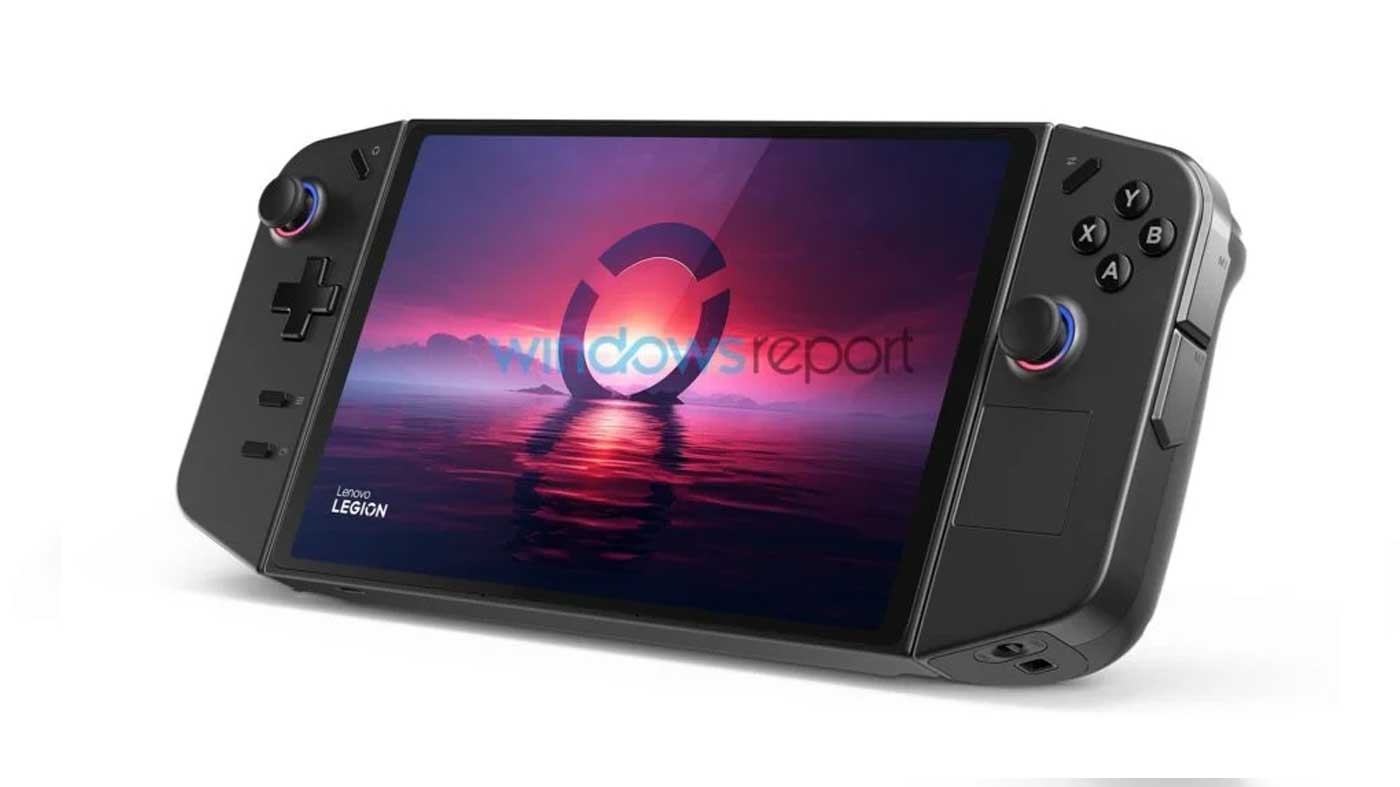
Image: Windows Report
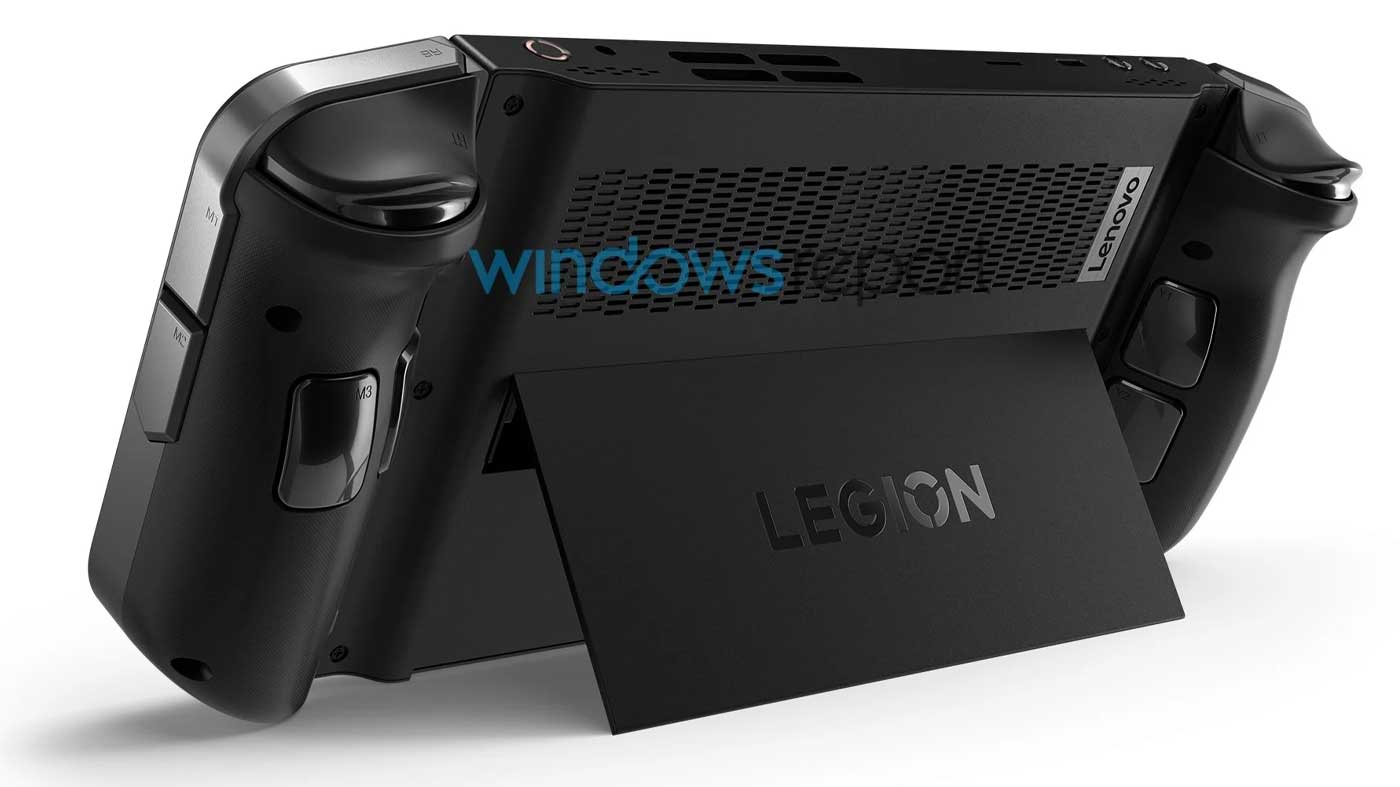
Image: Windows Report
Original Story:
Windows Central is reporting that Lenovo could be next in line to enter the steadily-swelling handheld PC gaming market with a device apparently called the Legion Go.
The outlet’s sources say it’s a Windows 11 handheld sporting an 8-inch display and AMD’s new Phoenix chips, processors designed to be ultra-thin and focused on gaming, AI, and graphics for ultrabooks. Lenovo reportedly had an Android-based device in the works that it never took to retail, with prototypes having surfaced a few months ago, so this could represent a pivot from that to something more competitive in the space, but even if these reports are true there’s no guarantee this device will see a public release either.
If accurate, the Legion Go will face some stiff competition with all manner of brands entering the fray from the recently-released ASUS Rog Ally to long-time staples like the Ayaneo devices and of course Valve’s Steam Deck. With more devices, and especially more Windows-based devices, it’ll hopefully continue to push Microsoft to better the experience for users of these devices.
EXCLUSIVE: According to our sources, Lenovo is working on a Steam Deck competitor too. ?
Details: https://t.co/NTtTHJIrrO #PCGaming #SteamDeck #Steam #ASUSROGAlly #ROGAlly
— Windows Central Gaming (@WinC_Gaming) July 31, 2023
Lenovo’s closest competition in the space would likely be the ASUS Rog Ally, which launched just under a couple of months ago at $1,299 and sporting the full Windows 11 experience along with impressive specs.
We said in our review of the ROG Ally, “All-in-all, the release of the ASUS ROG Ally feels like a significant step forward in this category. It’s the second major company to join the space, and provides something totally different to that of the Steam Deck. It’ll be exciting to see where this space goes in the coming months and years, and I really hope ASUS continue to tinker with things and improve this device, as I feel like there is so much potential to still be realised, even beyond the fantastic experience that it is whilst gaming.”
